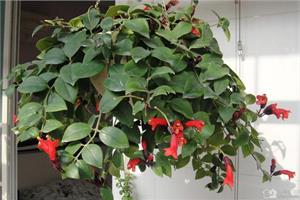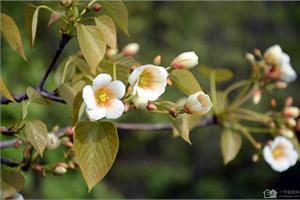Growth habits of Petunia how to reproduce petunia
Petunia is also known as ganoderma lucidum peony, bidong eggplant. Is a solanaceae winter solanum perennial vegetation flowers, often for an annual cultivation. Petunia flowers large, colorful, flower type changes a lot, has become an important potted and flower bed plants. Petunia is widely cultivated in Europe, America and Japan. Here's how Petunia breeds.

1. Growth Habits
Petunia is native to South America. Hi-Gwang. Like warm weather, in case of cool weather flowers less and luxuriant leaves. Not cold, winter should be slightly protected to avoid freezing. Avoid standing water. Likes slightly acidic sandy loam with good drainage. The soil is too fertile, it is easy to flourish, so that the branches elongate and lodge.
Second, how to plant petunias
1. Planting
Requirements slightly acidic, loose, fertile, good drainage soil, basin soil generally available sandy loam and decayed soil each half mixed preparation.
2. Fertilization
Petunia flower period is long, need to constantly supplement nutrition, can continue to bloom, so the growth period is generally applied every 10 days or so thin liquid fertilizer, more phosphorus fertilizer should be applied during the bud pregnancy period, so as to facilitate the flower multicolored.
3. Watering
Watering at ordinary times should be appropriate to prevent excessive dryness or excessive humidity. Dry plants wither, wet roots rot. Summer weather is hot, evaporation is the largest, should be timely supplementary watering, keep the basin soil moist and not ponding, rainy season should be timely drainage waterlogging prevention.
4. Shaping and pruning
When the seedlings grow to about 10 cm high, they are picked to promote the germination of lateral branches, and they bloom more. If you don't need to leave seeds after each flower withers, you should cut off the residual flowers in time, cut short the branches, and continue to sprout lateral branches and bloom continuously.
5. Breeding methods
1) Sowing and breeding. Petunia is often cultivated as an annual. The sowing time depends on the time of listing, and the actual sowing time should be adjusted according to different varieties. Petunia seeds are small, 9000--10000 seeds per gram, germination temperature is 20--22℃, indoor pot sowing, high temperature disinfection of culture soil, decaying soil and fine sand mixed soil. After sowing do not need to cover the soil, light pressure can be about 10 days to germinate.
2) The cultivation of the seedlings. Indoor cultivation can be carried out all year round. After flowering, cut off the top shoots, 10cm long, insert them into sand bed, insert soil temperature 20--25℃, root 15--20 days after insertion, and transplant them into pots 30 days later.
3) Tissue culture. Explants are seeds, leaves, fertilized ovaries, etc. Under sterile condition, the seeds were soaked in 75% alcohol for 8 minutes, then soaked in 0.1% mercuric chloride solution for 7 minutes, washed with sterile water, inoculated on MS medium (supplemented with 6-benzylaminoadenine 0.5- 1.0mg/L and naphthylacetic acid 0.1mg/L), small buds appeared after 15 days of inoculation, and then subcultured on the original medium. After 20 days, more than 10 buds could be obtained from one small bud. 100% of the 1cm strong buds were rooted on 1/2MS medium containing 0.05--0.2mg/L NAA after 10 days and became complete plantlets.
The above is the relevant introduction of this article, I believe you have read this also have a simple understanding, if necessary, you can continue to pay attention to No. 1 home network, to learn more information.
Related
- Wuhan Hospital Iron Tree Blooming Result Was Instantly Frightened by the Gardener Master
- Which variety of camellia is the most fragrant and best? Which one do you like best?
- What is the small blue coat, the breeding methods and matters needing attention of the succulent plant
- Dormancy time and maintenance management of succulent plants during dormancy
- Minas succulent how to raise, Minas succulent plant pictures
- What are the varieties of winter succulent plants
- How to raise succulent plants in twelve rolls? let's take a look at some experience of breeding twelve rolls.
- Attention should be paid to water control for succulent plants during dormant period (winter and summer)
- Watering experience of twelve rolls of succulent plants
- Techniques for fertilizing succulent plants. An article will let you know how to fertilize succulent plants.



